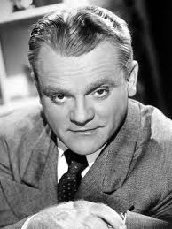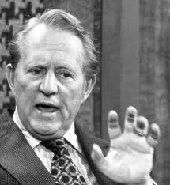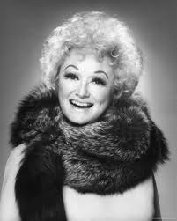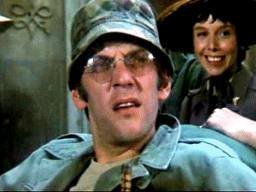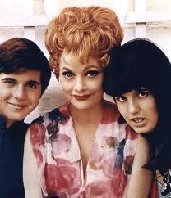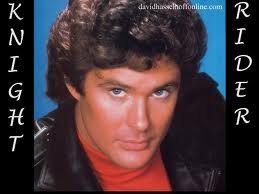
A convertible or cabriolet (/ˌkæbrioʊˈleɪ/) is a passenger car that can be driven with or without a roof in place. The methods of retracting and storing the roof vary among eras and manufacturers.
A convertible car's design allows an open-air driving experience, with the ability to provide a roof when required. A potential drawback of convertibles is their reduced structural rigidity (requiring significant engineering and modification to counteract the effects of removing a car's roof).
The majority of convertible roofs are of a folding construction framework with the actual top made from cloth or other fabric. Other types of convertible roofs include retractable hardtops (often constructed from metal or plastic) and detachable hardtops (where a metal or plastic roof is manually removed and often stored in the trunk).
Most of the early automobiles were open-air vehicles without any roof or sides. As car engines became more powerful by the end of the 19th century, folding textile or leather roofs (as had been used on victoria or landau carriages) began to appear on cars. Examples of early cars with roofs include the phaeton (a two-seat car with a temporary roof), the brougham or a coupé de ville, having an enclosed passenger compartment at the rear, while the driver sat in front either in the open, or the landaulet, where the driver has a fixed roof and the passenger compartment has a folding roof. Less expensive cars, such as the runabouts, sporting roadsters, or sturdy touring cars, remained either completely open air or were fitted with a rudimentary folding top and detachable side curtains.
In the 1920s, when steel bodies began to be mass-produced, closed cars became available to the average buyer, and fully open cars began their disappearance from the mainstream market. By the mid 1930s, the remaining small number of convertibles sold were high-priced luxury models.
In 1939, Plymouth introduced the first mechanically operated convertible roof.
Demand for convertibles increased as a result of American soldiers in France and the United Kingdom during World War 2 experiencing the small roadster cars which were not available in the United States at the time. These roadsters included the MG Midget and Triumph Roadster. United States automakers manufactured a broad range of models during the 1950s and 1960s – from economical compact-sized models such as the Rambler American and the Studebaker Lark, to the more expensive models, such as the Packard Caribbean, Oldsmobile 98, and Imperial by Chrysler.[16] Automakers often included a convertible body style as an available body style in a model range.
During the 1970s, the popularity of convertibles was severely reduced by the increased travel speeds on roads (resulting in more wind and noise for occupants) and proposed vehicle crash safety standards in the United States. Automobile air conditioning systems, T-top roofs, and sunroofs were also becoming popular, reducing the demand for convertibles. After the last Cadillac Eldorado convertible was made in 1976, the only convertibles sold in the United States were imported, until Chrysler Corporation introduced 1982 models based on the K-Car. For Chrysler, this was the LeBaron, and for Dodge, the 400. Ford reintroduced a convertible Mustang for 1983 while American Motors Corporation (AMC) added a convertible version of the Renault Alliance in 1984.
In 1989, Mazda released the first generation Mazda MX-5 (called "Miata" in North America), which has become the best-selling convertible with over 1 million cars sold. Also in 1989, Toyota released the Toyota Soarer Aerocabin, which uses an electrically operated retractable hardtop roof. A total of 500 were produced.
Models dedicated to the convertible body style include the Mazda MX-5, Porsche Boxster, and Opel Cascada.
This refreshing Creamy Cucumber Salad earns big points as a healthy side dish option. We use yogurt instead of mayonnaise to make a creamy dressing that's better for you. We love bringing this creamy cucumber salad recipe along to potlucks, because it's a nice change from your typical coleslaw and potato salad.
- 3 large cucumbers
- 1 small onion, grated (about 1/2 cup)
- 2 cups plain yogurt
- 1/2 teaspoon garlic powder
- 1 tablespoon dried mint leaves (see Option)
- 3/4 teaspoon salt
- 1/4 teaspoon black pepper
- Peel cucumbers and slice in half lengthwise. Scoop out seeds and coarsely chop cucumbers; place in a large bowl.
- Add remaining ingredients to cucumbers; mix well. Serve immediately, or cover and chill until ready to use.



1947 – Camilla, Duchess of Cornwall
National Tattoo Day on July 17th recognizes the history, culture, and artists dedicated to etching ink permanently on the skin. The day might just be the date to get that ink you’ve been contemplating.
Evidence of humans marking their bodies with permanent designs have existed for thousands of years. Egyptian and ice mummies reveal several forms of religious and status symbols.
The word “tattoo” is derived from the Polynesian language for tatau, which means “to tap or to mark.” Around the world, cultures surrounding tattooing vary, and some have changed very little over time. In the United States, sailors brought tattooing to coastal shores from their island exploits.
Getting inked continues to grow as technology and acceptance increase. While age, gender, religion, and class once divide the tattooed from the non-tattooed, those barriers are less common than they used to be. The reasons why we go under the needle differ, too. A tattoo may represent a significant event or hold intensely personal meaning. However, some people do get tattoos on a whim. Still, others confess, the need for a new tattoo is an addiction.
As the art form increases in popularity, considering a few things before getting a tattoo is essential:
Getting a Tattoo
- Research and find a reputable artist. Remember, this art is permanent. You will want a polished finished piece with no regerts – that is, no regrets.
- Once you’ve found an artist, be sure you have a design in mind. If you aren’t an artist, pulling an idea from your head and making it a reality will take time to develop.
- Check spelling. Fact check. If you use a foreign word or a quote in your design, research the meaning and check the spelling. The same applies to symbols. Just because a website translated a meaning or said symbol represented peace or love in a specific culture, doesn’t mean it’s true. And it’s not the artist’s responsibility to know either. Sometimes the design means something altogether different to the client.
- Be prepared to be placed on a waiting list. Good artists are in demand.
- You will pay more for good art. Nobody wants a lousy tattoo.
Day of Your Appointment
- Clear your day, especially if you’re getting a large tattoo.
- Arrive on time. Most artists charge by the hour, and any adjustment throws their entire day off. You can’t rush good art.
- Dress comfortably. You will be sitting or lying in a fixed position for long periods of time.
- Eat something. A protein bar won’t make you feel stuffed but will keep you alert and satisfied throughout the session.
- Bring water and stay hydrated.
- Tip your artists when the session is over.
NATIONAL TATTOO DAY HISTORY
National Tattoo Day has been observed since 2016. However, National Day Calendar continues researching the origins of the day.







